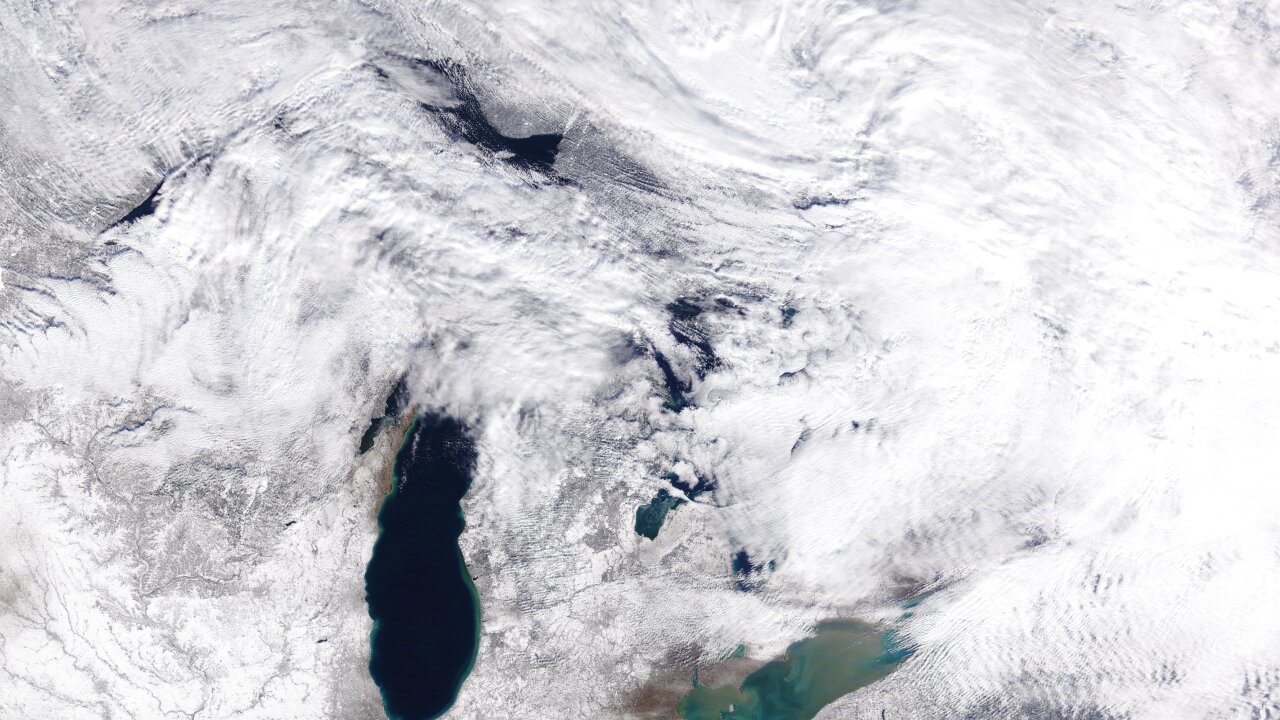(WXYZ) — Scientists from more than a dozen U.S. and Canadian institutions will conduct sampling of the Great Lakes this month, the first time its ever been done in the winter.
The coordinated campaign is called the Winter Grab and is the first of its kind, as nearly of the sampling of the Great Lakes between May through October when the lakes are free of ice and the waters are warmer.
Crews will sample all five Great Lakes – and Lake St. Clair – as part of the effort, according to the University of Michigan.
Teams will drill through the ice to collect water samples, measure light levels at different depths, and net tiny zooplankton to understand how the lakes are changing in the winter.
The plan is to run about 20 types of laboratory analyses on the samples, which will eventually lead to new publications and grant proposals.
Climate change is changing winter on the Great Lakes rapidly, with air temperatures warming, ice cover decreasing and precipitation patterns changing.
Related: Climate change warming Lake Michigan's deep water could have major impact on ecosystem, study finds
More than two dozen researchers will travel by foot, snowmobile, ATVs, sleds, and even an airboat, to collect samples at 20-30 locations on the Great Lakes during the week of Feb. 14. That date is usually when ice coverage peaks on the Great Lakes.
"Winter is rapidly changing on the Great Lakes, but our ability to understand and predict the consequences of those changes is impeded by a shortage of winter-period studies on most aspects of Great Lakes limnology," said lake biologist and Winter Grab project leader Ted Ozersky, from the University of Minnesota Duluth.
Ice coverage on the Great Lakes has increased amid a stretch of cold weather, and is nearly average for the year, but in December it appeared ice coverage was going to be down significantly, near record low levels.
Ice coverage has continued to decrease on the lakes, and some projections say ice coverage on the lakes could be rare by the end of the century.
"The ice forecasts changed in our favor. Right now, they suggest that more of the locations that we'd like to target might have ice," said U-M biogeochemist Casey Godwin of the Cooperative Institute for Great Lakes Research, said in a release.
According to researchers, winter sampling hasn't been done for a couple of reasons, including the dangers of doing the research on the lakes when they are covered in ice, and because many people believed nothing happened on the lakes during the winter months.
The researchers found new studies that show something different. Godwin said satellite observations actually show that months-long algae blooms occur in Lake Erie's central basin during the winter.
Marguerite Xecnopoulos, an ecosystem ecologist at Trent University in Peterborough, Ontario, said winter is the time altered most with climate change.
"With the loss of snow and ice cover, the need for winter research has never been greater, particularly to help inform management decisions," said Xenopoulos, who studies carbon and nutrients in lakes and rivers.
The organizations participating include:
United States universities: University of Michigan, University of Minnesota Duluth, participating U.S. colleges and universities include Michigan Technological University, Central Michigan University, Bowling Green State University, Oberlin College, Wright State University, Lake Superior State University, Ohio State University, Clarkson University and the University of Chicago.
Canadian universities: University of Windsor, Lakehead University and Trent University.
U.S. and Canadian government agencies: NOAA Great Lakes Environmental Research Laboratory, Environment and Climate Change Canada.



